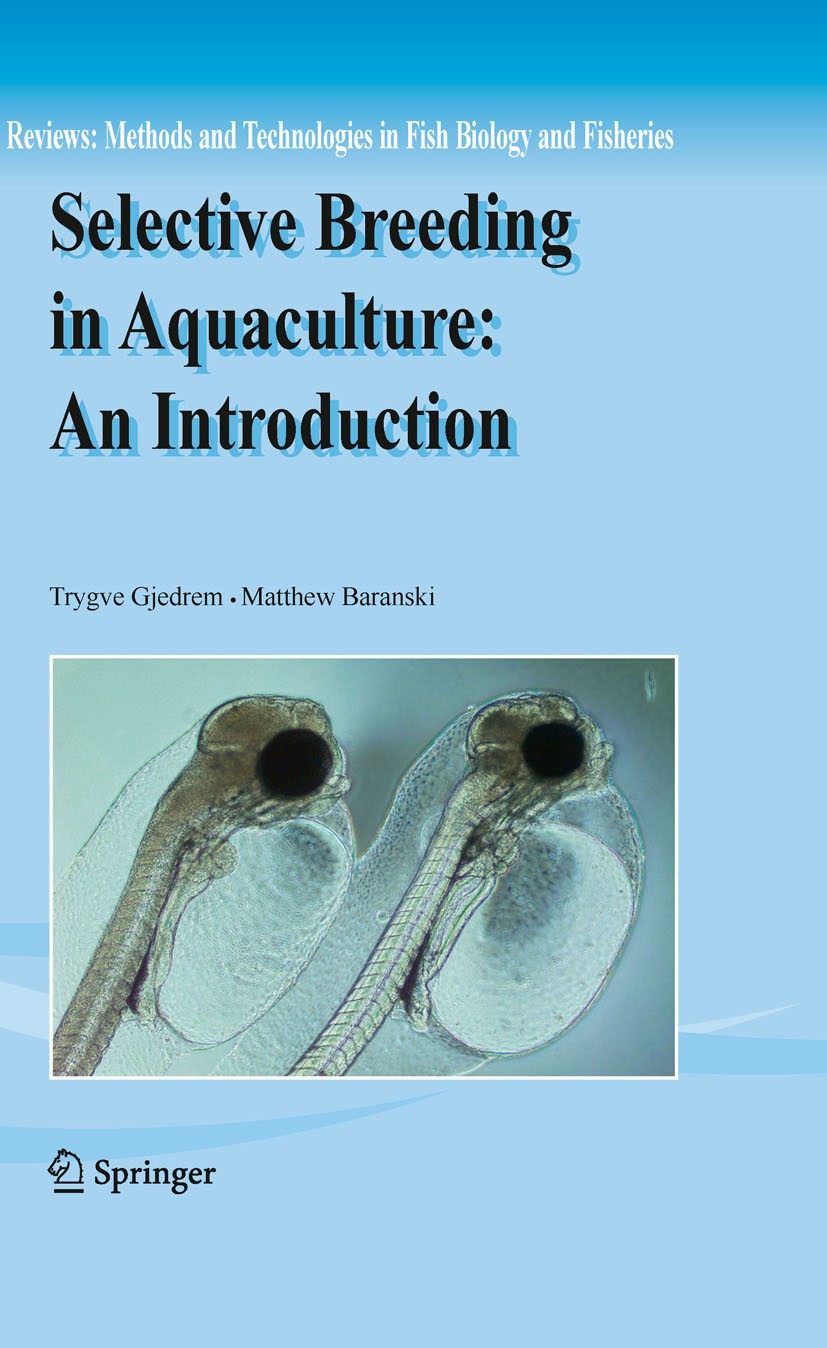| 书目名称 | Selective Breeding in Aquaculture: an Introduction |
| 编辑 | Trygve Gjedrem,Matthew Baranski |
| 视频video | http://file.papertrans.cn/865/864310/864310.mp4 |
| 概述 | An introductory guide to breeding programs in aquatic species.A comprehensive description of the important concepts behind selective breeding in aquaculture |
| 丛书名称 | Reviews: Methods and Technologies in Fish Biology and Fisheries |
| 图书封面 |  |
| 描述 | The foundation of quantitative genetics theory was developed during the last century and facilitated many successful breeding programs for cultivated plants and t- restrial livestock. The results have been almost universally impressive, and today nearly all agricultural production utilises genetically improved seed and animals. The aquaculture industry can learn a great deal from these experiences, because the basic theory behind selective breeding is the same for all species. The ?rst published selection experiments in aquaculture started in 1920 s to improve disease resistance in ?sh, but it was not before the 1970 s that the ?rst family based breeding program was initiated for Atlantic salmon in Norway by AKVAFORSK. Unfortunately, the subsequent implementation of selective breeding on a wider scale in aquaculture has been slow, and despite the dramatic gains that have been demonstrated in a number of species, less than 10% of world aquaculture production is currently based on improved stocks. For the long-term sustainability of aquaculture production, there is an urgent need to develop and implement e- cient breeding programs for all species under commercial production. The abil |
| 出版日期 | Book 2009 |
| 关键词 | Breeding Program; Domestication; aquaculture; biotechnology; breeding; food; genetics; growth; iron; lead; mol |
| 版次 | 1 |
| doi | https://doi.org/10.1007/978-90-481-2773-3 |
| isbn_softcover | 978-94-007-3677-1 |
| isbn_ebook | 978-90-481-2773-3Series ISSN 1571-3075 |
| issn_series | 1571-3075 |
| copyright | Springer Science+Business Media B.V. 2009 |
 |Archiver|手机版|小黑屋|
派博传思国际
( 京公网安备110108008328)
GMT+8, 2025-12-14 12:51
|Archiver|手机版|小黑屋|
派博传思国际
( 京公网安备110108008328)
GMT+8, 2025-12-14 12:51


